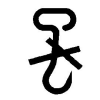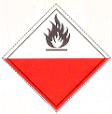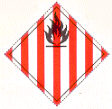| Esparto | [German version] |
Table of contents |
|
| General: | ||
| Product information | ||
| Packaging | ||
| Transport | ||
| Container transport | ||
| Cargo securing | ||
Product information
Product name
| German | Esparto, Halfa |
| English | Esparto |
| French | Alfa |
| Spanish | Esparto |
| Scientific | Lygeum spartum, Stipa tenacissima |
| CN/HS number * | 5305 9 ff. |
(* EU Combined Nomenclature/Harmonized System)
Product description
Esparto belongs to the category fibers/fibrous materials, which are classified as follows [24]:
Plant hairs:
| Cotton seed-hairs | |
| Kapok tree fruit hairs |
Stalk fibers from dicotyledonous plants (soft fibers):
| Flax, ramie (fine spinnable fibers) | |
| Hemp, jute, kenaf (coarse spinnable fibers) |
Leaf fibers (hard fibers):
| Sisal, Manila hemp, palm fibers (poor spinning characteristics) |
Bast:
| Linden, raffia palm, willow |
Basketwork material:
| Coconut fiber, rattan cane, halfa, piassava, esparto |
Esparto consists of the rush-like, smooth, tough, green stalks some 20 – 100 cm in length of various needlegrasses from the western Mediterranean area, such as esparto (Lygeum spartum) and halfa (Stipa tenacissima). It is also traded as esparto grass, Spanish grass, sparto grass and halfa or alfa grass.
Quality / Duration of storage
On acceptance of a consignment, particular attention must be paid to moisture damage. Badly warehoused bales can be recognized from the musty odor and fungal attack. An excessively high water content in inadequately dried product or absorption of water vapor in excessively dried product causes discoloration (possibly even blackening), so reducing its value.
A musty odor indicates moisture damage.
Esparto has a storage life of approx. 3 months.
Intended use
Esparto is used as a raw material for papermaking, as upholstery stuffing and as a binding material (coarse material with fragments of plant tissue, such as stalk, leaves or leaf parts, still attached).
Esparto paper is made solely from soft esparto pulp or alfa pulp.
Figure
(Click on the Figure to enlarge it.)
 Figure 1 |
Countries of origin
This Table shows only a selection of the most important countries of origin and should not be thought of as exhaustive.
| Europe | Spain, Italy, Cyprus |
| Africa | Algeria, Morocco, Tunisia |
| Asia | |
| America | |
| Australia |
Back to beginning
Packaging
Esparto is transported in bales. Bales vary in weight and degree of compression depending on country of origin (approx. 70 – 80 kg). The bales are tied with steel straps or wire.
| Marking of packages | ||
 Keep dry |
 Use no hooks |
 Keep away from heat (solar radiation) |
Back to beginning
Transport
Symbols
 Spontaneously combustible, Class 4.2 IMDG Code and ADR |
 Fire hazard (Flammable solids), Class 4.1 IMDG Code |
 General cargo |
Means of transport
Ship, truck, railroad
Container transport
Standard containers , subject to compliance with water content of goods, packaging and flooring.
Cargo handling
In damp weather (rain, snow), the cargo must be protected from moisture, since esparto is strongly hygroscopic and readily absorbs moisture. This may lead to discoloration and fungal attack.
Do not use hooks for cargo handling, since they may lead to sparking when they come into contact with the strapping.
In addition, smoking is absolutely prohibited during cargo handling.
Stowage factor
| 2.55 m3/t (bales, compressed) [1] | |
| 4.53 m3/t (bales, uncompressed) [1] |
Stowage space requirements
Cool, dry
Segregation
Fiber rope, thin fiber nets
Cargo securing
The cargo is to be secured in such a way that the bales or strapping are not damaged. Undamaged strapping is essential to maintain compression of the bales during transport. If the strapping is broken, compression is diminished, which at the same time results in an increased supply of oxygen to the inside of the bales. This in turn increases the risk of combustion or feeds a fire which has already started. Bursting or chafing of the steel straps and wires may lead to sparking and external ignition.
Back to beginning
Risk factors and loss prevention
RF Temperature
Esparto requires particular temperature, humidity/moisture and possibly ventilation conditions (SC VI) (storage climate conditions).
Favorable travel temperature range: no lower limit – 25°C
Esparto must be stowed away from heat sources.
Every hold should be equipped with means for measuring temperature. Measurements must be performed and recorded daily.
Back to beginning
RF Humidity/Moisture
Esparto requires particular temperature, humidity/moisture and possibly ventilation conditions (SC VI) (storage climate conditions).
| Designation | Humidity/water content | Source |
| Relative humidity | 65% | [1] |
| Water content | 7 – 14% | [1] |
| Maximum equilibrium moisture content | 65% | [1] |
Esparto behaves strongly hygroscopically (hygroscopicity) and must thus be protected from seawater, rain and condensation water and from excessive relative humidity in order to avoid discoloration, swelling, self-heating/spontaneous combustion, fungal attack and odor problems (musty odor).
Moisture measurements are recommended prior to loading. Moisture-damaged bales must not be accepted.
Back to beginning
RF Ventilation
Esparto requires particular temperature, humidity/moisture and possibly ventilation conditions (SC VI) (storage climate conditions).
If the product is loaded for shipment in a dry state, it does not have any particular ventilation requirements.
Problems arise if the product, packaging and/or ceiling/flooring are too damp. In this case, the following ventilation measures should be implemented:
Air exchange rate: 10 – 20 changes/hour (airing)
Since esparto absorbs oxygen, before anybody enters the hold, it must be ventilated and a gas measurement carried out, since a shortage of oxygen may endanger life.
Back to beginning
RF Biotic activity
Esparto displays 3rd order biotic activity.
It belongs to the class of goods in which respiration processes are suspended, but in which biochemical, microbial and other decomposition processes still proceed.
Back to beginning
RF Gases
Esparto consumes large quantities of oxygen. An oxygen shortage may therefore arise in closed holds and containers. Before anybody enters such holds, the holds must be ventilated and, if necessary, a gas measurement carried out.
An increase in CO2 and CO content indicates a cargo fire. The TLV of the hold air is 0.49 vol.%. As a result of the oxygen-rich lumen, bales often burn for weeks without being discovered.
Rotting processes may generate explosive gases and safety lamps must therefore be used as light sources.
Back to beginning
RF Self-heating / Spontaneous combustion
Esparto has an oil content of 0.4%.
Esparto is assigned to Class 4.1 of the IMDG Code (Flammable solids). However, its specific characteristics and negative external influences (see below) may cause it to behave like a substance from Class 4.2 (Substances liable to spontaneous combustion) of the IMDG Code or ADR.
Its high cellulose content makes esparto particularly liable to catch fire through external ignition. Therefore, it must always be protected from sparks, fire, naked lights and lit cigarettes. Smoking is absolutely prohibited. Sparks may arise from bursting or chafing of the steel straps (and also as a result of inadequate cargo securing in the hold or container) and cause a cargo fire. In accordance with the IMDG Code, ventilation openings leading into the hold should be provided with spark-proof wire cloth.
Spontaneous combustion may occur as a result of exposure to moisture, animal and vegetable fats/oils, oil-bearing seeds/fruits, copra and raw wool. As a result of the very well developed oxygen-rich lumen and the oxygen supply contained in the capillary cavity system, smoldering fires inside the bales often last for weeks.
Fire-fighting is best performed using CO2 or foam. It is very difficult to extinguish a fire because of the excess of oxygen in the esparto grass, which maintains the fire from the inside. When fighting a fire, do not break the steel straps or open the bales, since relieving the compression increases the oxygen supply and makes it impossible to fight the fire effectively.
Back to beginning
RF Odor
| Active behavior | Esparto has a very slight, pleasant odor. A musty odor indicates moisture damage. |
| Passive behavior | Esparto is highly odor-sensitive and extremely readily accepts foreign odors, which considerably restrict potential uses (use as upholstery stuffing becomes impossible). |
Back to beginning
RF Contamination
| Active behavior | Esparto causes contamination by forming dust. |
| Passive behavior | Esparto is sensitive to contamination by dust, dirt, fats/oils and rust as well as oil-containing goods, such as oil-bearing seeds/fruits, copra, raw wool etc., since oil-impregnated fibers promote self-heating/cargo fire. Holds or containers must accordingly be clean and in a thoroughly hygienic condition. Residues from previous cargoes, such as ores, stones, coal, metal filings, fertilizers etc., result in losses. Rust contamination may be caused by rusty metal straps, among other things. |
Back to beginning
RF Mechanical influences
Care must be taken to ensure that mechanical influences do not cause damage to strapping, which increases the risk of fire by relieving the compression of the bale and allowing a greater supply of oxygen. Use no hooks.
Back to beginning
RF Toxicity / Hazards to health
Since esparto is highly oxygen-absorbent, a life-threatening shortage of oxygen may arise in the hold or container. Thus, before anybody enters the hold, it must be ventilated and, if necessary, a gas measurement carried out. The TLV for CO2 concentration is 0.49 vol.%.
Back to beginning
RF Shrinkage/Shortage
Drying of the product during the voyage may result in weight losses of 3 – 8%.
Unclearly marked bales may result in losses of volume due to incorrect delivery.
Back to beginning
RF Insect infestation / Diseases
Moisture damage of esparto may also result in attack by molds. Mold growth is inhibited by treatment with boric acid powder.
Back to beginning
